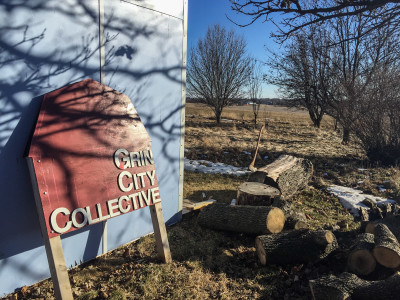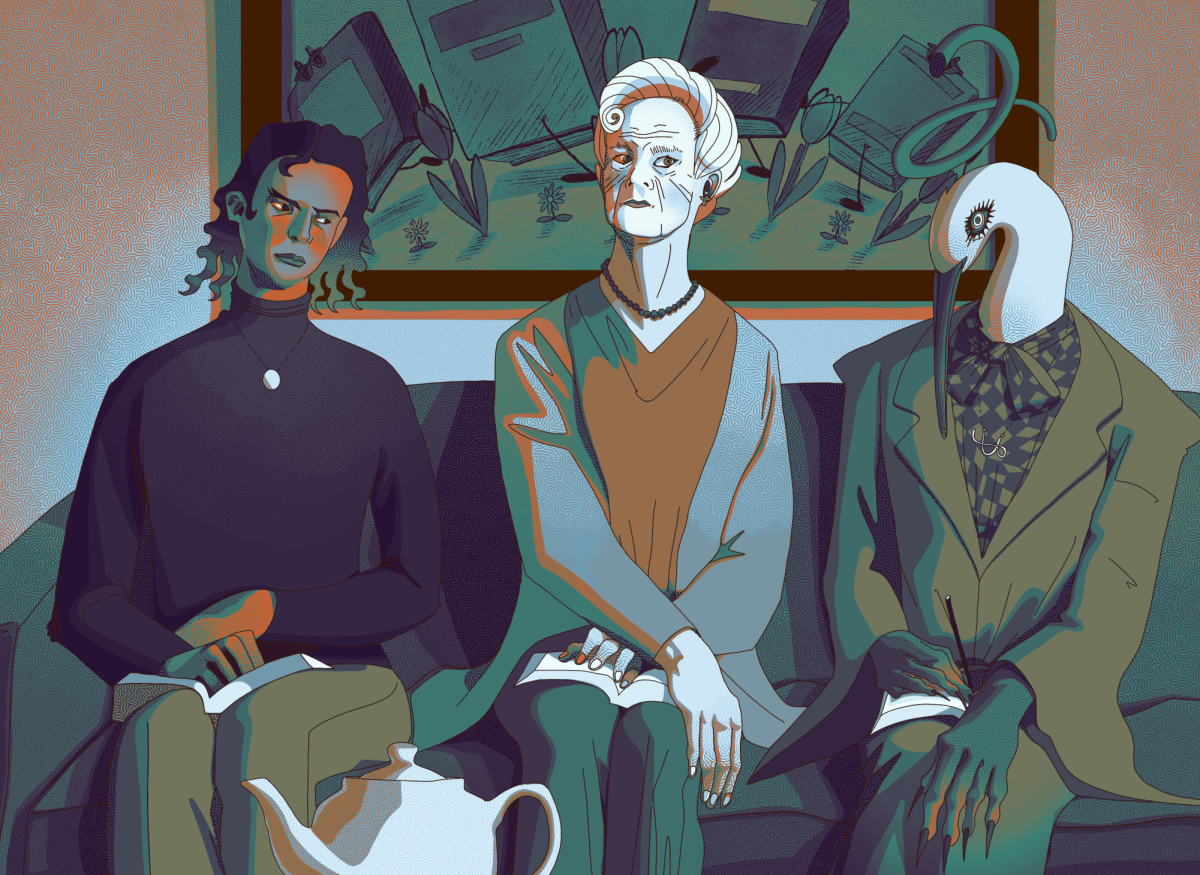The Grin City Collective is a residential art program dedicated to fostering new types of thinking and social commitment through a rural residential artistic program. It is located only half a mile from Grinnell on the Lacina family farm.
A highlight among the several programs the Collective offers is the Emerging Artist Residency. “[The Emerging Artist Residency is] free for the artists to attend. We are the only artist residency in the Country that provides this fully funded opportunity for juniors and seniors in college. The newest thing this year is that we are reserving a spot for a Grinnell College student,” said Molly Rideout ’10, the Residency Coordinator and Grin City co-director.
For the summer of 2015, eight applicants will be chosen for the residency. If selected for the four-week emerging artist program, the Collective will provide a writing or art studio and sleeping quarters in addition to a $200 stipend. For an additional sum, the wood and metal working studios, a pottery studio and a 3D printer are available for artists to use. Applications are currently open at grincitycollective.org and close March 10. The residency begins June 15.
Notwithstanding the newly created position, last year alone, several Grinnell students from diverse academic backgrounds including Biological Chemistry, English, Studio Art and Mathematics participated in the Collective.
“In the past we had Grinnell College students almost every single year because they are always very strong applicants,” Rideout said.
The Collective began in the summer of 2006 as founder Joe Lacina, then a rising junior at Maryland Institute College of Art, returned to his family’s farm near Grinnell with a cohort of six fellow artists.
That summer, the group spent four weeks on the spacious 320 acres. For studio space, they used the empty factory floor of his family’s tofu business, Midwest Harvest, which had been corporately acquired three years prior and was no longer in operation. At the end of the four weeks, Lacina and his fellow artists staged an art show for the community.

After graduating in 2008 with a degree in Fine Arts, Lacina created the Grinnell Artist Residency and the Emerging Artist Program. Replicating his own experience, the Emerging Artist Program provides third- and fourth-year undergraduates with a fully-funded opportunity to make art for a summer in a rural setting.
The Collective as it exists today focuses not only on developing young artists, but also hosts three- to six-week community-focused residencies for artists of all ages from April to October. According to the Grin City Collective website: “Most of the town of Grinnell didn’t even know residency existed, and nothing of what went on in the studios. Thus Grin City was born, a program dedicated to greater community sustainability and enrichment while maintaining the mission with which it began to support emerging artists.”
Both art and ideas continue to emerge out of the intellectual atmosphere that Lacina and Rideout have cultivated.
“Sometimes the projects just happen as a result of the artists working together and collaborating,” said Kenji Yoshino ’11, a former Emerging Artist who also works as both the Facilities Manager and the Outreach Coordinator at Grin City Collective.
Owing to the collective’s collaborative nature, much of the resultant work is public, such as the cut-vinyl short-stories that adorn the windows of Drake Community Library, or the monolithic chime installed outside of the Grinnell Area Arts Council. However, the collective focuses not only on art, but also on outreach and sustainability.
Separate from the Emerging Artist Residency, a summer 2014 incubator called Culture Lab focused on science education, producing projects such as Yoshino’s $10 smartphone-microscope and a robotic suit, both of which were on display at the Des Moines Science Center and the University of Iowa Children’s Hospital. In addition to this outreach, resident artists have the opportunity to participate in sustainable farming on the one-third-acre organic farm of Jordan Scheibel ’9.5.




























































